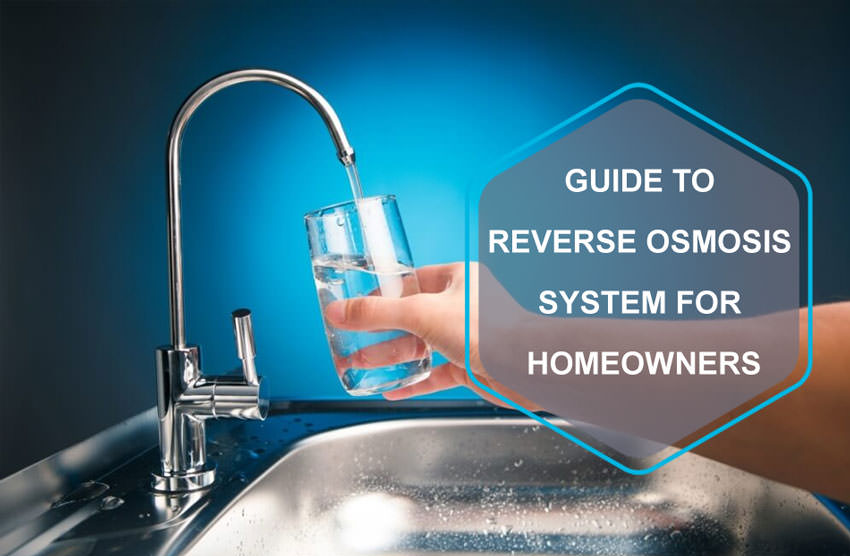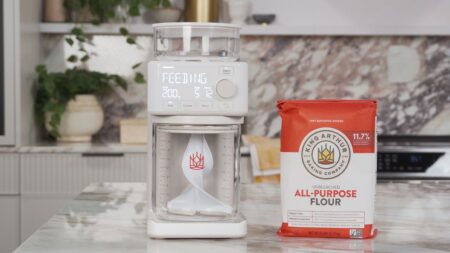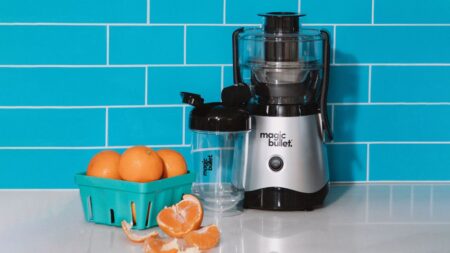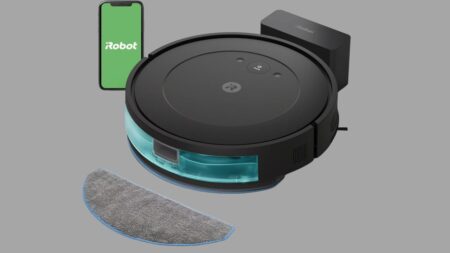Maybe you’ve decided that you’d like to have reverse osmosis water at home. Why don’t you pour some water into a reverse osmosis jug and enjoy pure, fresh water?
Well, it’s not that simple. Reverse Osmosis (RO) requires a certain amount of pressure, you won’t find a simple reverse osmosis filter. And if you want the reverse osmosis water to be distributed all over your house, you basically commit yourself to buying a completely new water system.
But if you only want reverse osmosis water for drinking or cooking, that doesn’t mean you’ve committed to turning your basement into a mini reverse osmosis plant.
Your first smaller-scale option is an under-sink system. A reverse osmosis unit is connected to the water supply under your sink, where the water passes through three to five filters to achieve purity.
The filtered water is stored in a storage tank (also under the sink). A separate tap is then installed on your countertop, fed from the storage tank after the filters.
You may be a little nervous about installing a complete faucet and water system (or maybe nervous that your landlord won’t be thrilled with your DIY ingenuity).
There are also reverse osmosis countertop filters, which allow you to connect a small filtration unit directly from your sink. Simply connect the “power” line to the tap, turn on the tap and the water is filtered through a small system that is small enough to fit next to the microwave.
But the smaller RO filters may not be ideal for everyone. Keep in mind that countertop systems can be quite slow because of the lower flow taps, and will cost at least $150, not to mention the cost of changing the filters (about $30) every few months.
What is Reverse Osmosis?
If you want drinking, cooking and bathing water as pure as possible, it is likely with a reverse osmosis filter system at home.
A typical RO system is installed under the sink or where the water enters the house, so all the water that goes around the house is filtered for contaminants.
Reverse osmosis is a water purification process that uses a semi-permeable membrane to remove unwanted substances, molecules, ions, and larger particles from water, making it safe for drinking.
RO is also a process that makes desalination (or the removal of salt from seawater) possible. Beyond that, reverse osmosis processes are used for recycling, wastewater treatment and can even produce energy.
Reverse osmosis is also one of the few ways we can extract certain minerals or chemicals from a water supply.
Some water sources have extremely high levels of natural fluoridation, which can lead to fluorosis of the enamel (mottled teeth) or much more severe skeletal fluorosis (an actual curving of a person’s bones or skeleton).
Using reverse osmosis, fluoride or other impurities can be filtered out on a large scale in a way that an activated carbon filter (such as the one most commonly found in homes) cannot.
Also Read: Best Smart Kitchen Appliances 2020
How Does Reverse Osmosis Work?
Assuming that we have a fairly good understanding of the definition of “reverse”, it is best to start by looking at how osmosis works before bringing the two concepts together.
First, what is Osmosis?
The definition of osmosis is the passage of a solvent, but not a solute, between two solutions of different concentrations separated by a semi-permeable membrane.
What, you don’t understand? No fear. Most of us don’t either, that’s why there are countless explanations and analogies to clarify osmosis. We will comment on some of them, but first, let’s divide osmosis into all its parts in order to understand it.
First, we will make our solution. We start with an old cup of boring water. To make things more tasteful, we will call the water “solvent”, which is convenient, because that is what it is. To make our solvent a little tastier, we will dissolve delicious sugar. Sugar is the solute.
As a summary, we now have water (solvent) in which we have dissolved sugar (solute), to make water with sugar (our solution).
Now that we have our sugar-water solution, we’ll take a U-tube. A U-tube is a beaker, shaped like a U.
Right in the middle of the tube, imagine a little Gore-Tex that cuts the U in half. Gore-tex is our “semi-permeable membrane.” Gore-tex is thin plastic, dotted with a billion tiny holes that allow water vapor to pass through, but the liquid stays outside.
(We chose Gore-tex because plastic wrap would not let anything through, and a cotton cloth garment would let almost anything through.)
On one arm of the U-tube, we pour our water-sugar mixture. In the other, we pour our plain, colorless, odorless water. That’s when the magic of osmosis begins if you find the movement of the water to be magical.
The liquid level in the sugar water arm will slowly increase, as the solvent (water) moves through the Gore-Tex, to make both sides of the U-arm closer to equal in the sugar to water ratio.
But why does this happen? Simply put, because water wants to find the balance. And because one side of the arm is full of sugar, the pure water on the other side decides to move to match the concentration or until osmotic pressure (the pressure that occurs when molecules move) is reached.
So there you have it; Osmosis occurs when a low concentration solution of solute moves across a membrane to reach the more concentrated solution, weakening it. You did it, you get it!
Now, after analyzing how osmosis works in one direction only, we turn it around and see how reverse osmosis works
We go Around the Osmosis
Being under pressure can set a building on fire, split a family in two, put people out on the street and also create a unique poem. Not to mention that pressure also makes reverse osmosis work.
We learned that in osmosis, a lower concentration solution will filter its solvent into a higher concentration solution. In reverse osmosis, we are (literally) reversing the process, by making our solvent filter come out of our high concentrate into the lower concentrate solution.
But as we’ve seen, that’s not something the solutions really want to do. How do we make reverse osmosis happen? We put the solution under pressure. Let’s take saltwater as an example:
In reverse osmosis, we would have a solution of saltwater on one side of a tank and pure water on the other side, separated by a semi-permeable membrane. We would apply pressure on the saltwater tank side, just enough to counteract the natural osmotic pressure on the pure water side, and then push the saltwater through the filter (this takes about 50-60 bar Lenntech pressure).
But due to the size of the salt molecules, only the smaller water molecules would reach the other side, thus adding fresh water to the water side, and leaving the salt on the other side.
To summarize: Reverse osmosis occurs when pressure applied to a highly concentrated solution of solute causes the solvent to pass through a membrane into the concentrated solution below, leaving a higher concentration of solute on one side and only solvent on the other.
Also Read: This Faucet Filter Monitors and Cleans Water You Drink
Advantages of Reverse Osmosis at Home
Improves Water Taste: Reverse osmosis filtration improves the taste, odor, and appearance of water by removing contaminants that cause taste and odor problems.
Eliminates Impurities: Reverse osmosis systems remove contaminants from water, including nitrates, pesticides, sulfates, fluorides, bacteria, pharmaceuticals, arsenic and many more. The carbon filter of a reverse osmosis system will also remove chlorine and chloramines.
Saves Money: With a reverse osmosis unit, you can cancel your water delivery service and stop buying boxes of bottled water. Your RO provides “better than bottled water” quality water for very little money per purified liter.
Easy Maintenance: Reverse osmosis systems have very few moving or replaceable parts which make reverse osmosis filtration systems easy to clean and maintain.
Do I Need a Reverse Osmosis Filter?
So we’ve already seen some of the ways we can take advantage of reverse osmosis water purification to make it work for us. But is asking nature to reverse itself, to return to a state that is not its own, necessarily a good idea?
There are surely arguments that arise from the use of reverse osmosis – people believe drinking ultra-clean water comes with detractors, even though it is fantastic. People also are of the opinion that the reverse osmosis process tends to remove many valuable minerals. But after understanding the entire process, it is easy to conclude that it has more advantages and benefits.
Many homeowners understand the benefits of RO but have doubts about whether they should switch to it or not? Tap water provided by municipalities often has traces of substances such as lead nitrates, nitrites, etc which can be harmful to the body over a period of time.
How to Install Reverse Osmosis Filter system
Installing the reverse osmosis system at home can seem a daunting task, but the truth is, RO kits make it really simple to set up. The kits come with special faucets, filters, water storage tanks, and semi-permeable membranes.
Experts recommend reverse osmosis filtration system with an automatic shut-off valve. Such a feature ensures on-demand filtered water, makes certain that the valve closes when the water storage tank fills up to disallow more water from entering the partially permeable membrane.
When the water is drawn from the faucet, the valve allows the water through the membrane, pushing the wastewater down the drain.
Cleaning and Maintaining the RO Filter
RO filter is a small investment you can make for your health. Install it and enjoy pure, tastier drinking water forever.
Though installing the system is the biggest task on the way, when you have come around, it is not difficult to maintain it and change the filters.
All types of reverse osmosis systems require periodic maintenance. This is to ensure it is working as it did when new. The interval in which the replacement of the filter is due depends on the type of filter and the harshness of water it is filtering. On average, the RO system requires filter change anytime between six months and one year.
Recommended Filter Change Schedule
Sediment Pre-Filter: Replace every 6 to 12 months
Carbon Pre-Filter: Replace every 8 to 12 months. This will help to ensure membrane life and quality
Carbon Post Filter: Replace this every 12 months
Reverse Osmosis Membrane: Replace reverse osmosis membrane every 2 years
Five Best Sub $300 Home Reverse Osmosis Water Filters
These top reverse osmosis water filter systems are meant to be installed and used in a single site, which is under the kitchen sink. They come with separate faucets that would need to be installed alongside the existing kitchen faucet for the clean, fresh drinking water.
Home Master TMAFC Artesian
Home Master is one of the finest reverse osmosis filter manufactures. The TMAFC Artesian by Home master is a full-contact use, seven-stage filtration and water purification system designed to remove up to 99 percent of dissolved particles and other harmful contaminants.
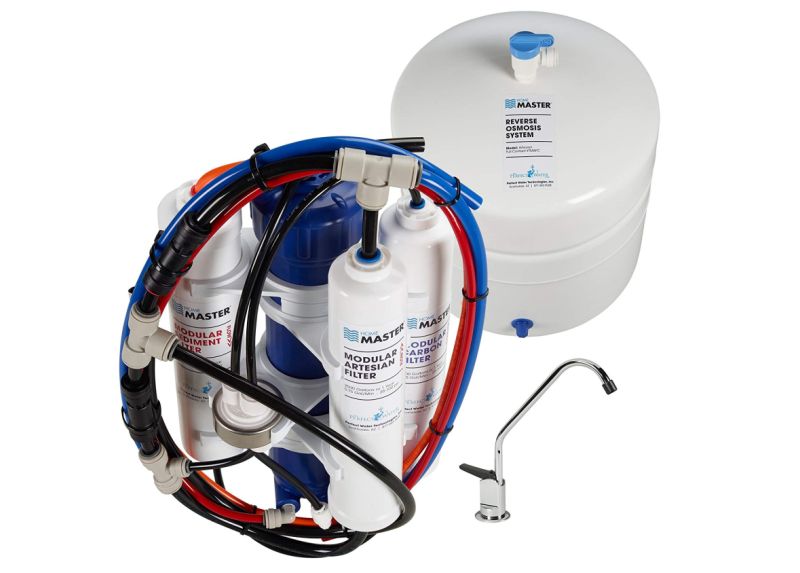
Just like the other Home Master RO filters, the TMAFC Artesian also employs all-in-one disposable filter. The entire filter housing is compact and durable, which makes annual filter changes quick and efficient and also ensures fewer filter changes are required. TMAFC Artesian requires a filter change once a year or after 2,000 gallons of water has been filtered.
In the TMAFC Artesian, once the water has passed through the RO membrane, it is then made to pass through a remineralization filter, which adds some safe minerals and calcium back to the purified water. This raises water’s pH, making it more alkaline and tastier.
Price: $264
iSpring RCC7AK
The iSpring RCC7AK features a six-stage layered filtration system built around precise reverse osmosis technology that helps remove up to 98 percent of different kinds of soluble contaminants and provide safe and pure drinking water.
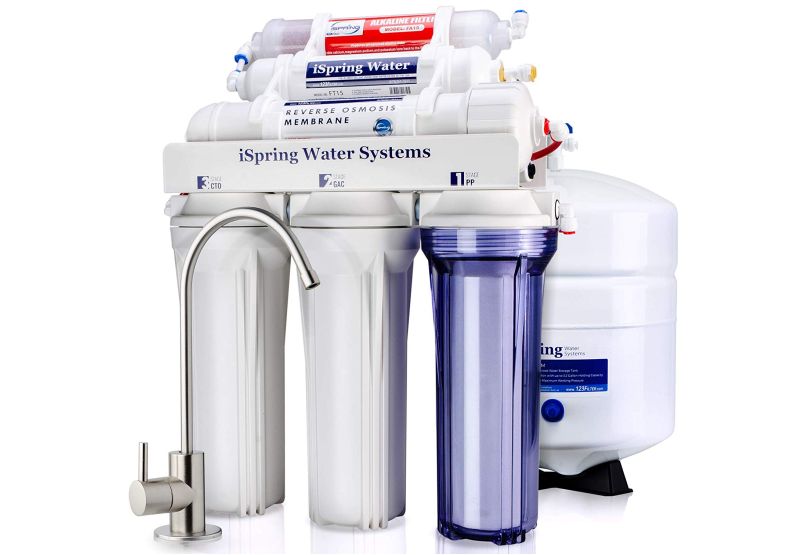
The iSpring RCC7AK comes with a beautiful European style kitchen faucet and transparent housing that makes inspection to see filters and membrane condition effortless. The filtration system with three extra-long life pre-filters is provided with all necessary parts to ensure easy DIY installation.
The entire water filter system fits nicely under a standard kitchen sink. Its RO membrane removes all harmful pollutants while the system’s alkaline remineralization layer adds back some essential minerals to the purified water to make it fresh and tasty.
Price: $233
APEC ROES-PH75
Another popular reverse osmosis under sink filtration system is the APEC ROES-PH75, which is famous for its inexpensive price tag and easy installation. Designed and assembled in the USA, this six-stage water filter is made from high caliber components that eliminate contaminants from the water and have a long, lasting performance.
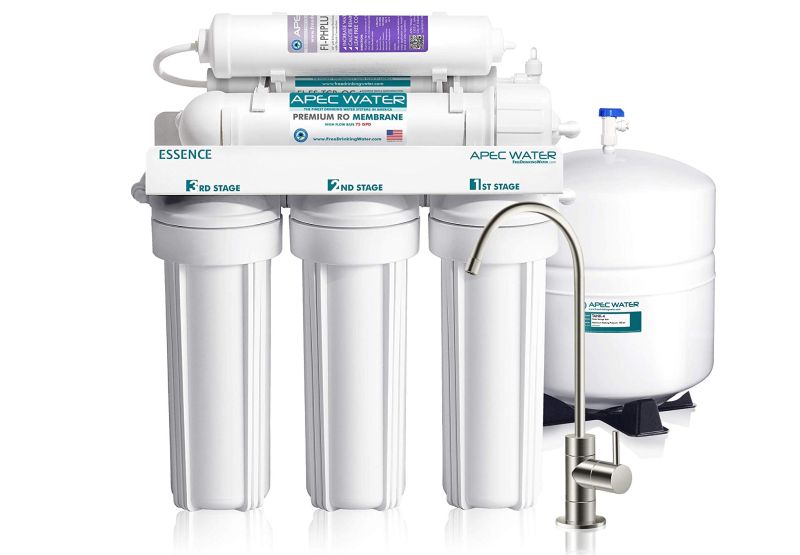
APEC iterates, remineralization reverse osmosis systems add various beneficial minerals back to the water but in most cases, this mineral formation is from uncertified sources. APEC touts its ROES-PH75 however adds calcium and minerals to enhance the water taste for people who prefer alkaline or mineral water in a known and certified manner.
Price: $214
Express Water ROALKUV10M
Designed for homes, apartments, and RVs, this compact 11-stage alkaline ultraviolet reverse osmosis filter system provides pure alkaline water which improves the taste of drinking water. Capable of removing Lead, Chlorine, Fluoride, and over 130 other contaminants from water, the Express Water ROALKUV10M features a quick-connect tubing system for hassle-free DIY installation.
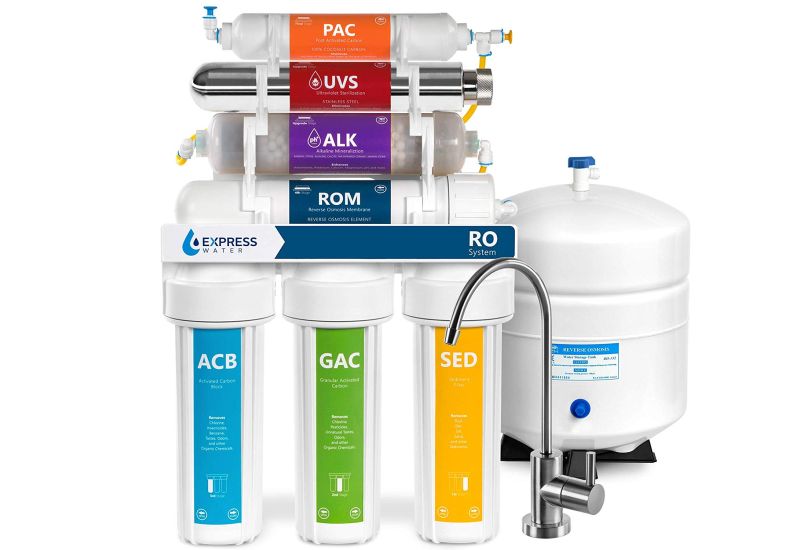
After passing through filtration and purification in ten stages the water then undergoes UV light sterilizer to ensure enhanced purity. The UV light comes equipped with an alarm that alerts if the power of UV falls below the germicidal range.
Price: $220
APEC RO-90
Another popular RO system with netizens is the APEC RO-90. It is majorly popular since the company rates it to deliver ultra-pure, contaminant-free 90 gallons of water per day. The 9 GPD output is one of the highest in the under-sink filter system and is an important factor when it comes to choosing a filter for heavy-duty kitchens.
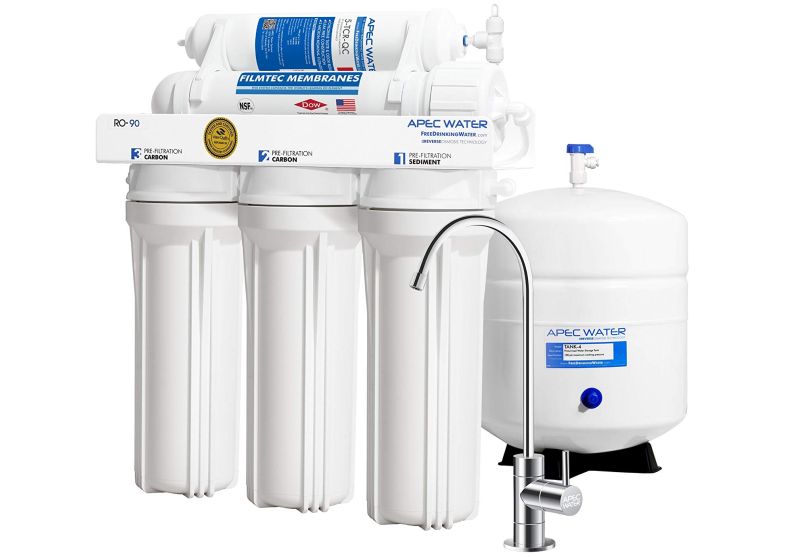
The five-stage filtration system of the APEC RO-90 tends to waste three gallons of water on average to produce one gallon of purified water, this may alter depending on the type of water in your location.
The APEC RO-90 comes complete with faucet, storage tank and other essentials needed to install the system easily.
Price: $219
Follow Homecrux on Google News!
